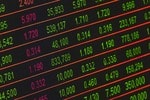
Why Did Stan Druckenmiller Sell Broadcom Stock?
In Q3, legendary macro investor Stan Druckenmiller sold his entire…


In Q3, legendary macro investor Stan Druckenmiller sold his entire…

AI cloud computing business CoreWeave (NASDAQ:CRWV) has been through a…

In Q3, billionaire Stan Druckenmiller bought about 4,620 shares of…
Market Cap: $4.5T
P/E Ratio: 63x
Market Cap: $4T
P/E Ratio: 36x
Market Cap: $3.8T
P/E Ratio: 39x
Corcept Therapeutics, Inc. [CORT] is up 5.11% over the past day.
Axsome Therapeutics, Inc. [AXSM] is down 3.83% over the past day.
Nutex Health, Inc. [NUTX] is down 9.63% over the past day.